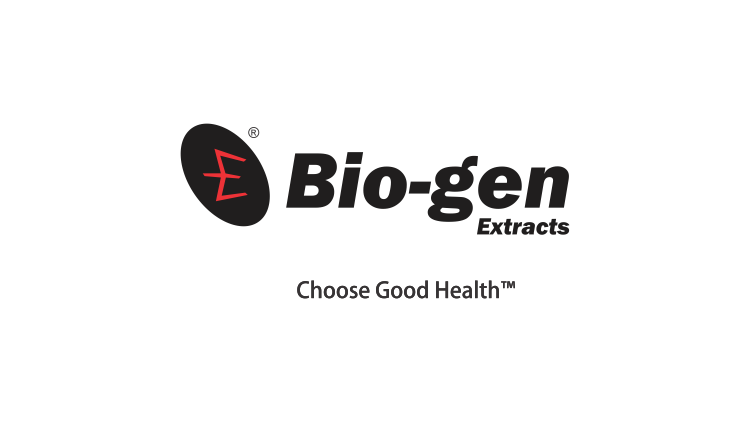Promotional Features
As the eye health market expands, analysts predict lead role for clinically validated lutein
The eye health market is expanding. With rising screen time and oxidative stress in all age groups, the market has moved beyond its traditional focus on seniors to meet demand from younger people. The changing demographics are driving brands to explore new ingredients and delivery methods to address the needs of younger consumers. Against that backdrop, lutein has emerged as an ingredient that has what it takes to succeed in the new eye health landscape.
Eye health began changing before the pandemic. Back in May 2019, 25% of UK consumers aged 16 to 24 expressed an interest in trying sports or energy drinks that support eye health, reflecting both the expansion of the market beyond seniors and the need to offer delivery formats other than capsules and tablets to capture the new consumers.1
The pandemic strengthened the forces behind the expansion of the eye health market. As meetings went virtual and working from home became the norm, people began spending more time in front of computer and smartphone screens. One survey found two-thirds of people increased their screen use early in the pandemic.2 Multiple surveys have since suggested the pandemic will cause a lasting change in working habits, with the remote model persisting to an extent even after the crisis ends.3–7
Changes in screen time have implications for eye health. There is evidence the high-energy blue light emitted by device screens can cause eye strain and dry eyes.8 Over the longer term, researchers have linked the cumulative effect of the light to increased risk of age-related macular degeneration.9,10
Reports of links between screen time and eye health are reaching consumers. A survey found 60% of people who increased screen use during the pandemic are worried about the impact of the change on their eye health.11 The figure reflects the fact that almost half of the people reported suffering from dry eyes after increasing their screen time.
Clinically validating lutein in eye health and beyond
The changes in consumer behavior are fueling interest in eye health ingredients, leading analysts at Mintel to identify marigold, a plant source of lutein, as a product to watch.1 Only 12% of eye health products launched from 2016 to 2020 contained the ingredient. That figure could rise in the coming years, as growing awareness of the ingredient and mounting evidence of its effects create a window of opportunity for brands to capture the nascent market.
Bio-gen Extracts showed the potential of lutein in a randomized, double-blind, placebo-controlled clinical trial. The study compared Lute-gen, a combination of lutein and zeaxanthin, to placebo. After six months, healthy volunteers who received Lute-gen, with or without natural mixed carotenoids, had statistically significant changes in Macular Pigment Optical Density (MPOD) from baseline. MPOD was unchanged in the placebo group.
The result positions Lute-gen as a good fit for consumers worried about the effects of blue light on their eyes. Macular pigment, a collective term for the lutein, zeaxanthin and meso-zeaxanthin that accumulates at the central retina, absorbs blue light before it reaches the receptors.12 That role has spurred research into the link between lutein levels and eye health.13
Bio-gen Extracts’ study also looked at the effect of Lute-gen on Central Foveal Thickness (CFT). Levels of macular pigment peak at the central foveal area, where light falls directly on the cone cells that give the sharpest image. Participants in the two Lute-gen cohorts experienced statistically significant changes in CFT, while the thickness was unchanged over the course of the trial in the placebo group. CFT was positively correlated to MPOD, in line with the hypothesis of the study.
Addressing pill fatigue with novel delivery formats
Lutein is typically administered in solid oral dosage forms. However, only providing the ingredient in those dosage forms will limit growth and expansion beyond seniors as “pill fatigue” is pushing people to seek alternatives to capsules, tablets and softgels.
The importance of pill fatigue to the supplement market is demonstrated by data. More than half of the supplement industry professionals surveyed in a 2020 poll said they are seeking novel delivery formats and dosage forms to mitigate pill fatigue.14 Consumer interest in novel delivery formats is illustrated by sales of gummy supplements, which doubled from 2014 to 2018 amid rising demand from the adults who make up 80% of the market.15,16
Bio-gen Extracts has recognized the need to provide eye health products in a range of delivery formats. Brands that work with Bio-gen Extracts can benefit from its ActiSperse, EmulSave and OptiBead technologies. ActiSperse and EmulSave enable the conversion of hydrophobic compounds into cold water soluble powders and emulsions, while OptiBead facilitates the creation of uniform, free-flowing, oil insoluble beadlets for use in liquid filled capsules. The technologies facilitate the use of lutein in beverages, tinctures, melt-in-mouth powders, thin films, effervescent tablets and powders.
To create Lute-gen, Bio-gen Extracts sources lutein from marigold growers located near to its base in India. The model gives Bio-gen Extracts complete visibility into the supply chain, from seed to drum, and thereby provides customers with confidence that Lute-gen is a clean-label ingredient that is free from solvents, pesticides and GMOs. The traceable and transparent supply chain sets Lute-gen apart.
Having clinically established Lute-gen for eye health, Bio-gen Extracts has also successfully completed a cognitive function study with promising results. The work builds on the clinical evidence Bio-gen Extracts has gathered, providing brands with more opportunities to use Lute-gen to meet the demand for validated ingredients suitable for use in novel dosage forms.
References
1. Hancocks, N. Mintel: Health ingredients to watch in 2022. (2021).
2. Rolland, B. et al. Global Changes and Factors of Increase in Caloric/Salty Food Intake, Screen Use, and Substance Use During the Early COVID-19
Containment Phase in the General Population in France: Survey Study. JMIR Public Health Surveill 6, e19630 (2020).
3. Home or office? Survey shows opinions about work after COVID-19.
4. Global, E. Y. More than half of employees globally would quit their jobs if not provided post-pandemic flexibility, EY survey finds. EY (2021).
5. Study reveals most employees want to keep working from home.
6. What 800 executives envision for the postpandemic workforce. (2020).
7. Wearn, L. J. &. Most workers do not expect full-time office return, survey says. BBC (2021).
8. Rosenfield, M. Computer vision syndrome (aka digital eye strain). Optometry 17, 1–10 (2016).
9. Tosini, G., Ferguson, I. & Tsubota, K. Effects of blue light on the circadian system and eye physiology. Mol. Vis. 22, 61–72 (2016).
10. Ozkaya, E. K., Anderson, G., Dhillon, B. & Bagnaninchi, P.-O. Blue-light induced breakdown of barrier function on human retinal epithelial cells is
mediated by PKC-ζ over-activation and oxidative stress. Exp. Eye Res. 189, 107817 (2019).
11. Alcon survey shows more screen time causing consumer concern about eye health, increasing symptoms of dry eye.
12. Loskutova, E., Nolan, J., Howard, A. & Beatty, S. Macular pigment and its contribution to vision. Nutrients 5, 1962–1969 (2013).
13. Lima, V. C., Rosen, R. B. & Farah, M. Macular pigment in retinal health and disease. Int J Retina Vitreous 2, 19 (2016).
14. Survey report: State of the north America supplements, health & nutrition sector 2020.
15. Reynolds, C. M. The Analyst’s Take: Gummy supplement sales double from 2014 to 2018. (2019).
16. Krawiec, S. Who’s driving the gummy supplement market? Hint: It’s not kids. Nutritional Outlook (2018).


